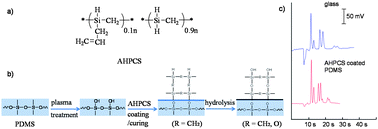Silicate glass coated microchannels through a phase conversion process for glass-like electrokinetic performance†
Abstract
The surface modified

* Corresponding authors
a
National Creative Research Center of Applied Microfluidic Chemistry, Chungnam National University, Daejeon, Korea
E-mail:
dpkim@cnu.ac.kr
Fax: +82 42 8236665
Tel: +82 42 8216695
b Graduate School of Analytical Science and Technology, Chungnam National University, Daejeon, Korea
The surface modified

 Please wait while we load your content...
Something went wrong. Try again?
Please wait while we load your content...
Something went wrong. Try again?
M. Li and D. P. Kim, Lab Chip, 2011, 11, 1126 DOI: 10.1039/C0LC00522C
To request permission to reproduce material from this article, please go to the Copyright Clearance Center request page.
If you are an author contributing to an RSC publication, you do not need to request permission provided correct acknowledgement is given.
If you are the author of this article, you do not need to request permission to reproduce figures and diagrams provided correct acknowledgement is given. If you want to reproduce the whole article in a third-party publication (excluding your thesis/dissertation for which permission is not required) please go to the Copyright Clearance Center request page.
Read more about how to correctly acknowledge RSC content.
 Fetching data from CrossRef.
Fetching data from CrossRef.
This may take some time to load.
Loading related content
